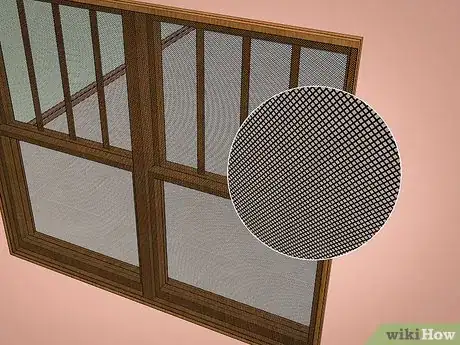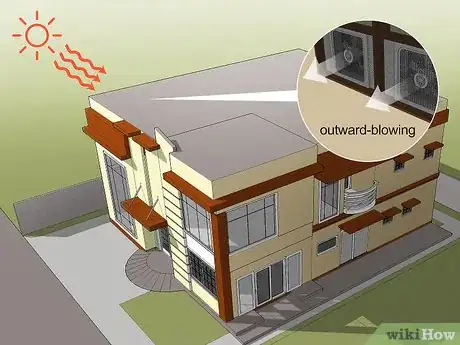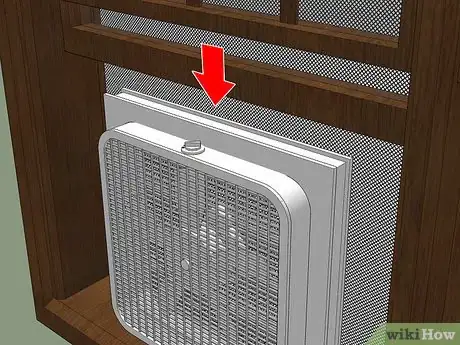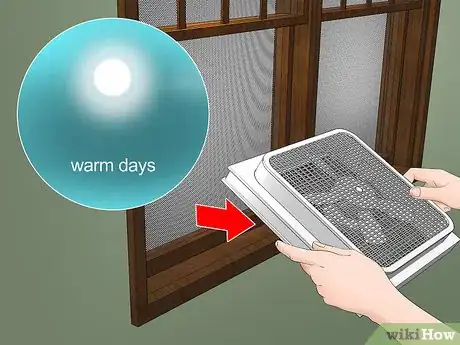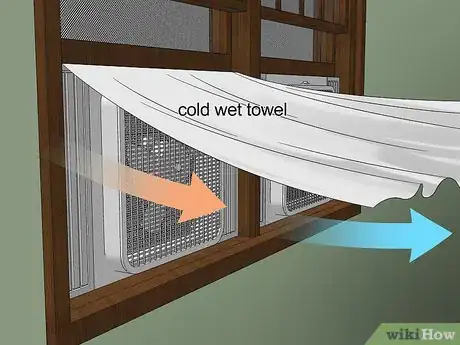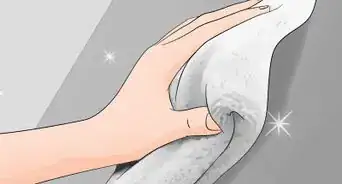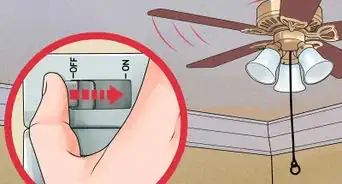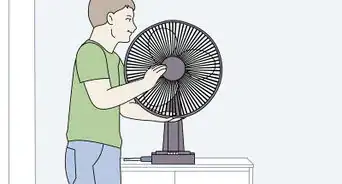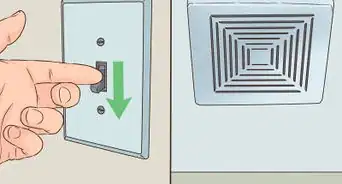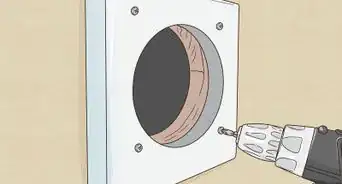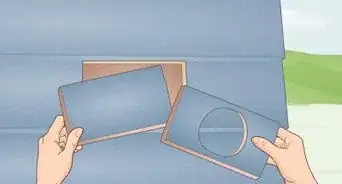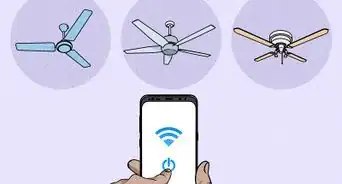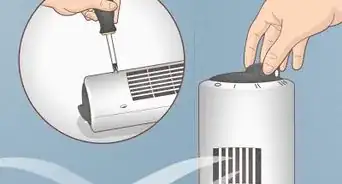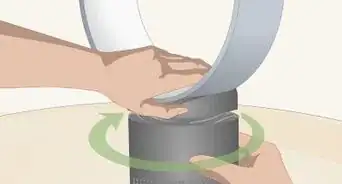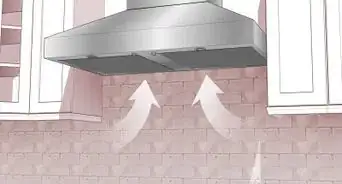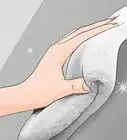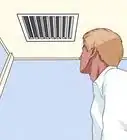This article was co-authored by Walter Brant. Walter Brant is a wikiHow community member and contributor who has been repairing and restoring houses with over 30 years of experience. He works with homeowners to make a wide variety of improvements to make their homes more comfortable and liveable.
wikiHow marks an article as reader-approved once it receives enough positive feedback. In this case, 92% of readers who voted found the article helpful, earning it our reader-approved status.
This article has been viewed 817,313 times.
If you’re looking for an inexpensive, environmentally friendly cooling method for your home, consider using window fans. Window fans can effectively cool your home in seasons when it is hot during the day and cool and dry at night and also during chilly days. The fans will save you from having to run the air conditioner, which will lower your electric bill and benefit the environment. To cool your home, use fans to pull cool outside air into the home at night, while other fans blow out hot air from inside the home.
Steps
Choosing a Fan
-
1Choose square box window fans rather than other types. Box window fans have flat sides and blow air in a single direction, which makes them ideal for blowing a steady stream of air into or out of your home.[1] Visit your local hardware store or home-improvement store and look at their box window fan selection.
- While other types of fans, like circular rotating fans, are great for moving air around inside your home, they’re less effective at bringing in air from outside.
-
2Select the largest fans that fit inside your home’s windows. A larger fan will move more air than a smaller fan. Look for fans that will take up at least 2/3 of the horizontal width of your window frame. Make sure that the fans also fit within the lower portion of your window when the window pane is fully opened.[2] Square fans aren’t too expensive, so plan to pay $15-30 USD per fan.
- If you need to, measure the dimensions of your windows and take a tape measure with you to the hardware store so you can measure the fans as well.
- Avoid fans that are too large for the window. If you position them near the window and outside the window frame, they’ll fall over.
Advertisement -
3Purchase an even number of fans to maximize airflow. When you install the fans, some will be situated to blow cool air inward and others will blow hot air outwards. It’s best to have the same number of fans blowing in each direction.[3]
- Bear in mind that setting up 2 or 3 smaller, less powerful fans is roughly equivalent to 1 large, powerful fan.
- If you have an uneven number of windows and can’t have equivalent fans blowing inward and outward, it's better to have more blowing inward. This creates a slight positive pressure inside the home, which prevents dust and insects from coming in when the doors are opened.
Selecting a Location
-
1Make sure your windows have screens and aren't near noise sources. This will ensure that your home is suitable for window-fan cooling. Cooling your home with window fans is not recommended for homes without window screens, as insects or animals may enter through the open windows.
- Noises outside the home will also become louder inside with the window open, although the fan noise may mask some of this.
-
2Situate the fans in windows far from sources of bad smells. Take a look at your home’s outside surroundings before you decide which windows to situate your fans in. Avoid setting fans to blow inward near garbage cans or parking areas, where fumes and odors may enter the home.[4]
- Creating air intake near trees or flowering plants will bring pleasant smells into your home.
-
3Place inward-blowing fans on the ground story of your home. At night, the air near the ground will be the coolest. Situate 2-3 fans in windows on the bottom floor to blow inward and pull in cool outside air. Also use window fans for daytime cooling on chilly days. In this situation, when you’re placing inward-blowing box fans, select windows that are on a shaded side of your home.[5]
- If you’re using fans during the day, set 2-3 fans to blow inward from the coolest side of the home. This will typically be the side in shade or the side facing north.
-
4Install fans blowing outward on the top floor of your home. Fans located in windows on the top floor of your home will blow warm air outside. If you have an attic in your home, place the outward-blowing fans in attic windows and leave the attic door open. If you’re using fans during the day, position your outward-blowing box fans in windows located on the sunny side of the house.[6] [7]
- If you live in a single-story home, set up fans to blow inward on the shaded side of your home. Set the fans blowing outward in windows on the opposite side. Leave the doors inside your home open for maximum air flow.
Installation and Use
-
1Close each window tightly around the fan to hold it in place. Open the window and place your fan in the windowsill. Make sure it’s balanced. Then, lower the top panel of the window until it’s securely pressing down against the top of the fan. This will prevent the fan from slipping out of place and either falling into your home or down outside of your home.[8]
- If your windows open sideways rather than vertically, open the window wide enough to accommodate the width of the fan. Then close the window so the fan is held in place between the sliding window pane and the wall.
-
2Cover gaps on either side of the fans if they're smaller than the frame. The fans won’t be able to effectively cool your home if there are gaps between the sides of the window frame and the edges of your fans. Tape paper over the gaps on the inside of the window beside inward-blowing fans. Or, pull out the plastic extender panels on the sides of the fan to keep air from escaping beside the fans.[9]
- Blocking the gaps beside fans blowing outward is difficult. Tape up paper or cardboard on the outside of the window, if it’s accessible.
- If you can’t access the outside of the window, securely tape the paper or cardboard down on the inside of the window.
-
3Turn on window fans at night when it’s cooler outside than inside. If it’s warmer outside than inside, your fans will blow hot air around. So, turn the fans on when it’s cooler outside in order to bring in cool air and lower the temperature inside your home.[10]
- This will also reduce your need to use air conditioning during the day, since your home will have cooled off at night.
-
4Remove the fans and close the windows when it’s warm outside. Turn off and remove the fans before you close the windows and blinds or drapes on warm days. Shutting the blinds or drapes will reduce solar heating.[11] If you leave the fans on during the heat of the day, they’ll blow hot air into the home.
- Removing fans from windows when not in use might be difficult for the elderly or disabled individuals. In such cases, leave the fans in the windows.
-
5Drape a cold, wet towel over inward-blowing fans when it’s hot out. Select a size of towel that matches the size of the fan. So, if the fan is 18 inches (46 cm) across, use a towel with roughly the same width. The wet towel will dramatically increase the fans’ cooling performance for about 1 hour.
- The air propelled by the fan will push past the towel and the cold water will lower the temperature of the air.
Expert Q&A
-
QuestionHow can I cool a room with a window fan?
 Walter BrantWalter Brant is a wikiHow community member and contributor who has been repairing and restoring houses with over 30 years of experience. He works with homeowners to make a wide variety of improvements to make their homes more comfortable and liveable.
Walter BrantWalter Brant is a wikiHow community member and contributor who has been repairing and restoring houses with over 30 years of experience. He works with homeowners to make a wide variety of improvements to make their homes more comfortable and liveable.
Handyman If it's colder outside than it is inside, like at night, leave the window open with the fan running to cool down your space.
If it's colder outside than it is inside, like at night, leave the window open with the fan running to cool down your space. -
QuestionCan I install dual blade window fans vertically?
 Jensen LinCommunity AnswerYou can, but be sure the fan is the right size for the window. Use the extendable panels located on the sides of the fan to make sure there is no gap between the window and the fan.
Jensen LinCommunity AnswerYou can, but be sure the fan is the right size for the window. Use the extendable panels located on the sides of the fan to make sure there is no gap between the window and the fan. -
QuestionWhat happens if I turn it on at night after a sunny day? Will I get hot or cool air?
 DvortygirlCommunity AnswerYou get whatever temperature the air is outside. If that's cooler than what's inside your home, it will cool your home. If it's hotter, it will heat it. If it's about the same, the temperature won't change, but at least the air will be moving, which may help you feel cooler.
DvortygirlCommunity AnswerYou get whatever temperature the air is outside. If that's cooler than what's inside your home, it will cool your home. If it's hotter, it will heat it. If it's about the same, the temperature won't change, but at least the air will be moving, which may help you feel cooler.
Warnings
- The gratings in the front and back of a fan are often spaced widely enough for a child's finger to be inserted. Avoid using fans in rooms where small children could put their fingers in the fan blades.⧼thumbs_response⧽
- Avoid placing inward blowing window fans above valuable items, like an antique desk or expensive rug, to prevent water damage.⧼thumbs_response⧽
- If you live in a polluted area, using a window fan will pull this pollution inside. If you’re worried that this may cause potential health problems, use another method to cool your home.⧼thumbs_response⧽
References
- ↑ https://www.bobvila.com/articles/how-to-use-a-window-fan/
- ↑ https://www.bobvila.com/articles/how-to-use-a-window-fan/
- ↑ https://www.bobvila.com/articles/how-to-use-a-window-fan/
- ↑ https://www.bobvila.com/articles/how-to-use-a-window-fan/
- ↑ https://www.bobvila.com/articles/how-to-use-a-window-fan/
- ↑ Walter Brant. Handyman.
- ↑ https://www.washingtonpost.com/news/wonk/wp/2016/07/14/how-to-cool-your-house-like-a-wonk/?noredirect=on&utm_term=.4b1e84b0a60b
- ↑ https://homesteady.com/how-8365812-install-window-fan.html
- ↑ https://homesteady.com/how-8365812-install-window-fan.html
About This Article
To use window fans for cooling your home, select square box fans that fit snugly inside of your window frame. Then, install at least one fan facing inside that pulls air from outside and blows into the house. Turn on inward-facing fans at night, when it's cooler outside than it is inside. Next, install a fan facing outside to pull warm air from inside of the home. Turn outward-facing fans on during the day to blow warm air out of your living spaces. When it's extremely hot, turn off the fans and close the blinds to keep your home cool. Keep reading for tips on properly installing the fans!



